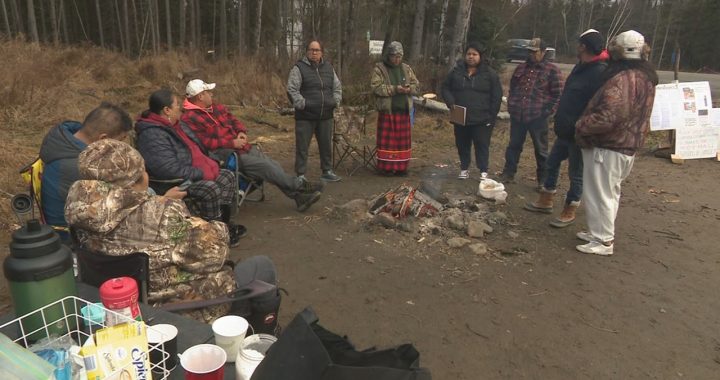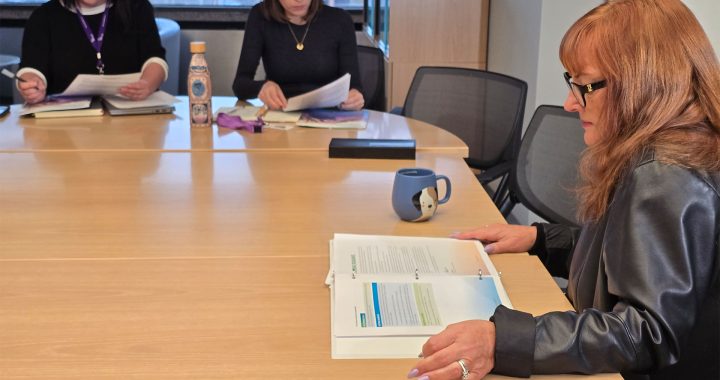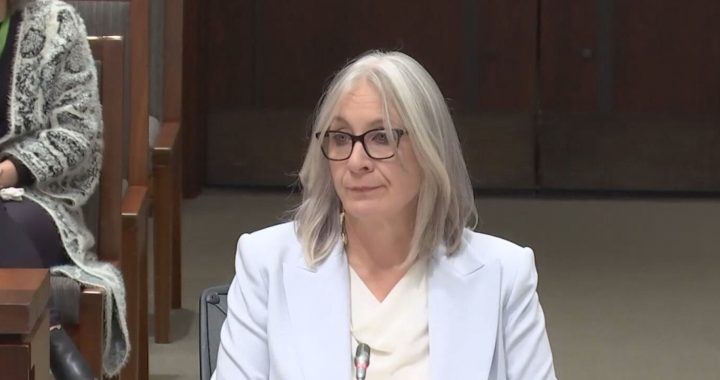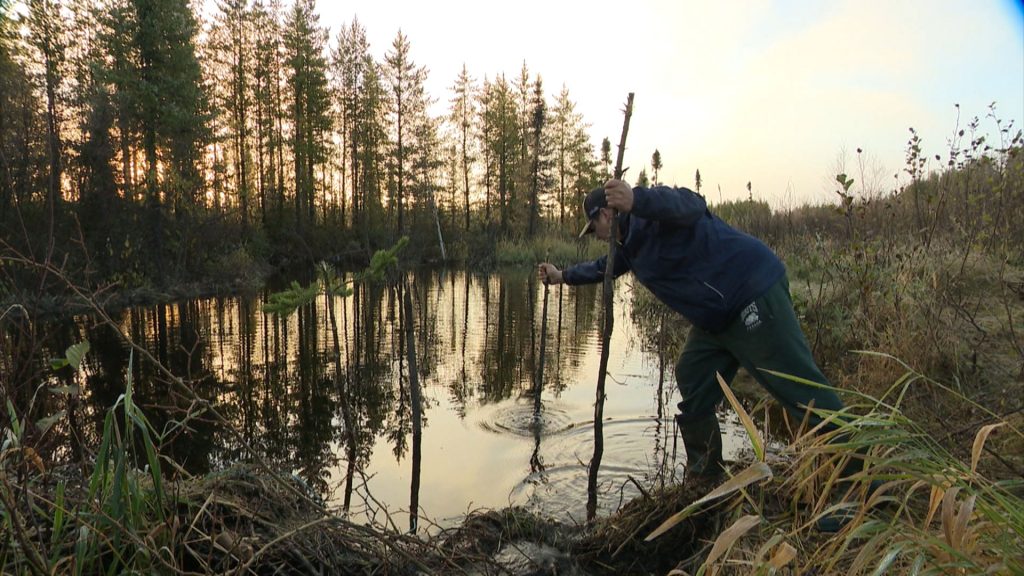
Setting a beaver trap on the family trapline on what the Cree call Eeyou Istchee, or 'people’s land.' Photo: Jeff Dorn/APTN.
Ernie Moses is what Cree in Quebec call a tallyman – someone who is in charge of their family’s trapline.
It’s something Moses has done for over 20 years.
Located near the Cree First Nation of Eastmain in the James Bay region of Quebec, there’s not much else the 64-year-old would rather be doing with his time.
“How do I explain it… it’s just so open!” said Moses, illustrating with his arms. “Seeing nature, that’s what I love. And trapping, moose hunting, setting snares, and all of that.”
Moses’s favorite animal to trap?
The beaver.
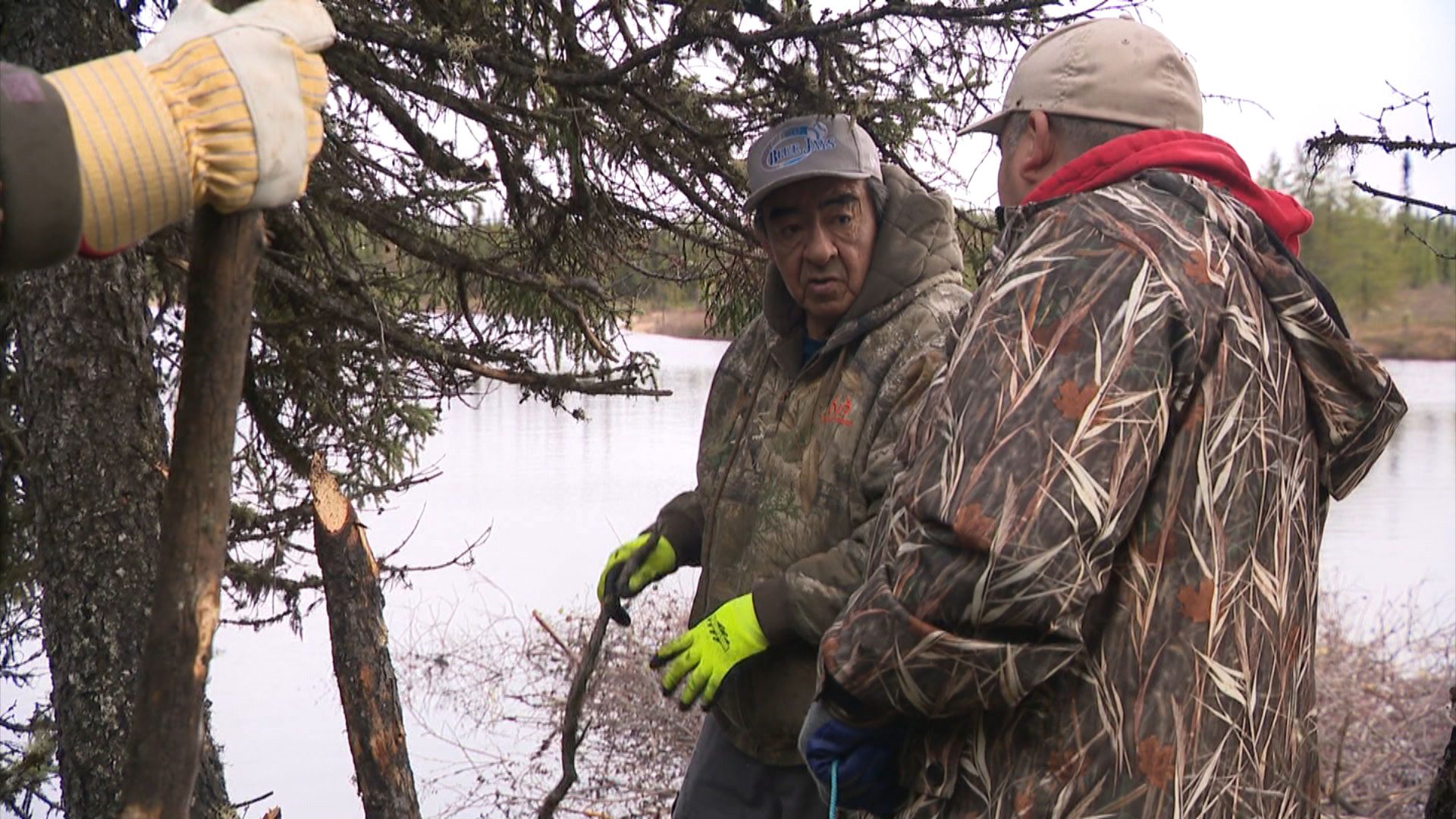
In late October Moses took APTN’s Nouvelles Nationales out on his trap line, where his rapid tongue clicks caught the attention of a beaver swimming near their dam.
His call wasn’t quite enough to fool the beaver, but no matter, that’s what the traps are for.
“One more inch, off the ground…” directs Ernie to his 17-year-old grandson Winston.
Winston is standing in a couple of feet of water, holding a couple of recently cut saplings with a spring-loaded body grip trap attached to them at the bottom. With Ernie’s approval from the shore, Winston jabs the saplings downward, submerging the trap underwater.
Knowing the best place to put a trap is the kind of thing Ernie learnt through years of observation and experimentation on this land he’s come to know so well.
Now he’s trying to pass along that knowledge.
“I’m teaching them how to skin beaver,” says Ernie “How to cut, how to cook, even how to prepare everything.”
But it’s not only beavers who make dams around Moses’s trapline.
In 2002, Hydro Quebec built the Eastmain-1 hydroelectric dam.
More than 600 square kilometres were flooded, creating a vast reservoir.
The dam was built after Quebec signed the Paix des Braves agreement with the Cree.
“This agreement marks a turning point. The Crees in Quebec have decided to put the weight of history behind them,” says former grand chief Ted Moses during the signing.

The Paix des Braves cleared the way for revenue sharing and joint management by the Cree and Quebec for forestry, hydroelectricity, and mining.
The community voted 68 per cent in favour of the agreement, citing the jobs it would create despite the environmental cost of the Eastmain project flooding 600 square kilometres of land.
“This reservoir, when I look at the immensity of water gathered here, there used to be other kinds of water,” recalls Moses. “There were lakes and rivers. At least 20 rapids here.”
Moses was able to adapt after the 2002 flooding, but now his life will once again change irrevocably.
His trapline falls on land earmarked for the future Rose Lithium-Tantalum open-pit mining project.
Set to be built by the Critical Elements Corporation, the life expectancy of the mine is 17 years and is projected to produce 4,500 tonnes of minerals per day.
According to the company, it’s projected to be worth $1.2 billion and will create 199 full-time jobs at peak production.
In July 2019 the Grand Council of the Crees, as well as the Cree Nation of Eastmain, signed an agreement regarding the mine. The Cree stand to gain construction contracts, training for jobs, and an undisclosed amount of money.
“So, we’re working together to be able to get as many people from the communities to work on the project,” says Jean-Sébastien Lavallée, CEO of the Critical Elements Corporation. “ It’s a generational project, but there are other generations to come so to have companies who will develop in the long term that can benefit not only a community but several communities.

Construction is set to begin in Summer 2022. Environment Canada has approved the project, saying that there will be a minimal amount of environmental impact.
But two lakes will be drained, and Moses and his family will lose the land they are trapping beavers on.
For his part, Moses struggles to reconcile the loss of his land with the economic benefits his community will receive.
“I don’t want anything to do with it,” says Moses “Like I said, I don’t think I’m going to win this one for my family. It [the mine] is for the community here.”
Moses’s trapline isn’t the only area in Cree territory rich with lithium and other rare earth metals.
Two other mining projects, the Whabouchi and the James Bay Lithium mines, are within driving distance of Moses’s trap line and are expected to be worth billions of dollars over the next few decades.
“We believe that the Cree Nation is a model for what you can bring to the table if you have a willingness to move forward in partnership,” says Cree Grand Chief Mandy Gull-Masty.
In an interview, Gull-Masty affirms that Cree leaders are determined to walk the line between economic development and land preservation.
“For me, tallymen are very important. My grandparents were tallymen who spent their lives on the trapline. And I understand the importance of their knowledge if a project touches someone at that level,” he says.
The recently elected Gull-Masty was deputy grand chief back in February 2020 when the Cree Nation Government signed the Grand Alliance, a $4.7 billion memorandum of understanding to improve infrastructure for mining, such as the building of railroads and a deepwater port off the coast of Hudson’s Bay in their northernmost community of Whapmagoostui.
“The Grand Alliance was launched under the last grand chief, Abel Bosum,” says Gull-Masty “He had a vision to really understand how we can manage economic development on our territory. I find it’s essential.
“It’s a beautiful nation to nation partnership with the government of Quebec. And you know we’re asking ourselves how to get this file up and running. We are in the process of doing feasibility studies. But we are really at the beginning of this file.”
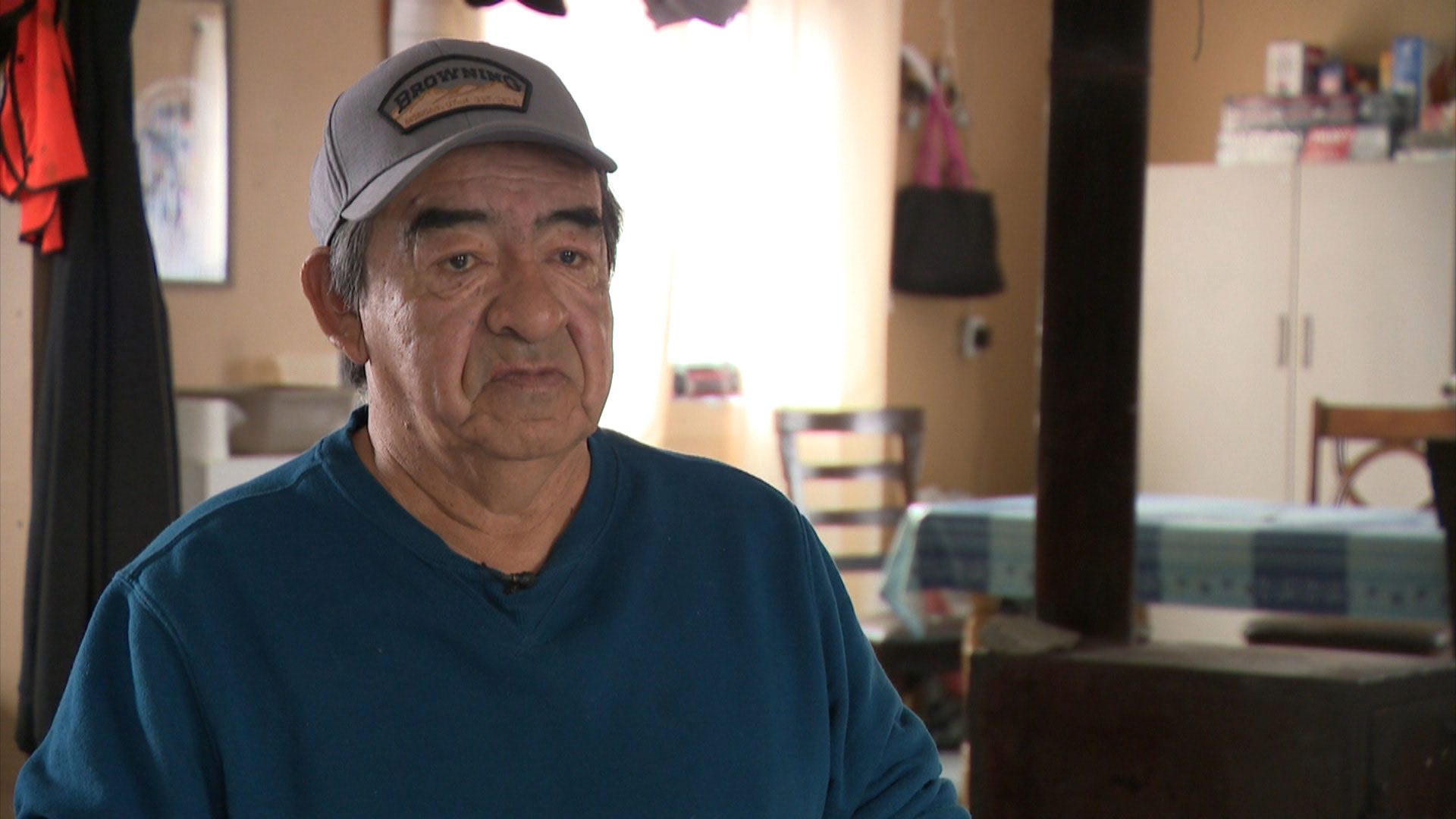
Environmentalists say the mining of lithium and other rare earth minerals are bad for waterways.
But according to a geologist Michel Jébrak, that depends.
In the case of the Rose mine, he expects there to be few long term effects to waterways because there is a lack of toxic minerals in the ground that will leach into the water.
Jébrak also explained that minerals like lithium and tantalum are essential for electric vehicles and other aspects of modern life, making them incredibly valuable.
“Twenty years ago the portable telephone was a big box,” says Jébrak. “A very, very heavy thing that had to be dragged around. But then someone had the idea to put a bit of tantalum in it, a tantalum capacitor which made it so you could fit it into your pocket.”
It’s the day after the traps were set and Ernie Moses’s watches approvingly as his daughter’s partner Randy pries a large dead beaver out of a spring-loaded body grip trap.
As a tallyman, one of Moses’s unofficial duties is to make sure that the younger generation is able to take on the role here, on this same land where his grandmother, Eliza Moses, taught him everything.
The land the Cree call Eeyou Istchee, or “people’s land.”
“I was adopted by my grandmother when I was young. At the age of two. She was like my mother, she took me in. It was her who showed me how to live in the woods,” he says.
Watch Part 1 of Shushan Bacon’s stories on Ernie Moses and his trapline:
Watch Part 2 here:
Now that it’s Moses’s turn to teach the younger members of his family, he’s forced to confront the fact that soon he will no longer be able to do so on parts of the land he devoted his life to know.
“We can’t go hunting over there for about 25 or 20 years around there,” laments Moses’s grandson Winston “They’re blocking us from hunting on our trapline. And I don’t think there’s anything we could do about that.”
“I want to teach them the way my grandmother, my uncles, taught me.” adds Ernie Moses. “I want them to learn the traditional life.”
Moses says he understands that the mine will financially benefit the Cree for generations to come. But that doesn’t mean he approves.
Not much can get between the love a tallyman has for his trap line.
“It really hurts, I don’t know what else to say other than it’s only my trapline I’m thinking about.”






